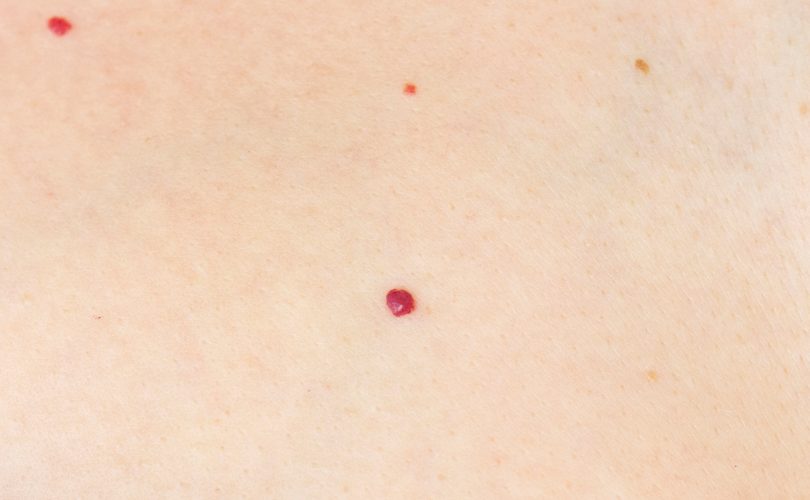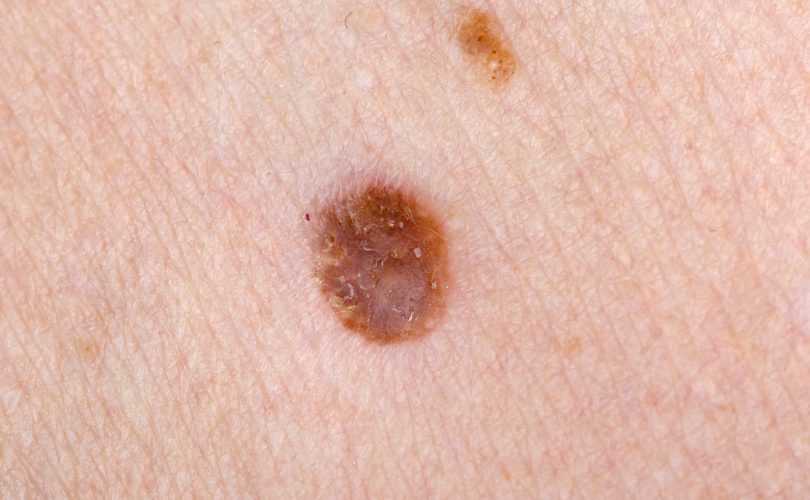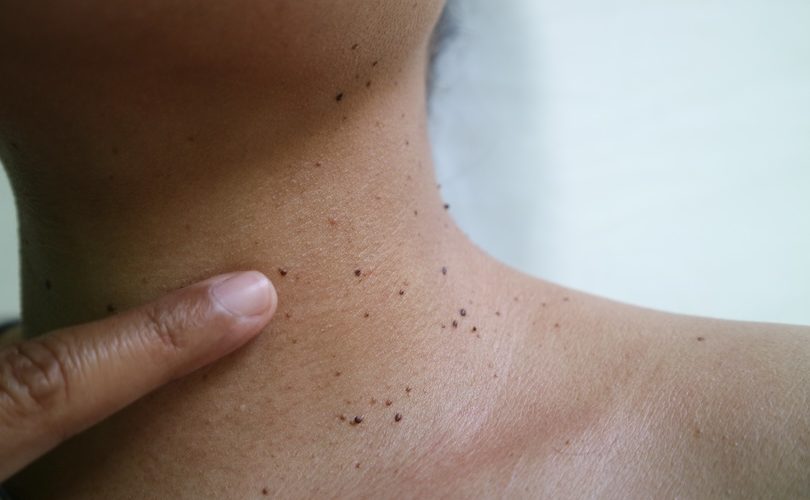A cherry angioma is a common, benign skin growth characterised by a bright red, round or oval-shaped papule. These small, smooth lesions are caused by an overgrowth of blood vessels and typically range from 1-5 mm in diameter. Cherry angiomas usually appear in adults over 30 and become more numerous with age. They’re most often found on the trunk, arms, and legs. While harmless, they may bleed if injured.
Advanced Electrolysis for Removals
Removal of Skin Blemishes

Dermatosis Papulosa Nigra
Dermatosis papulosa nigra (DPN) is a benign skin condition characterised by small, smooth, dark brown or black papules on the face and neck. These lesions are more common in individuals with darker skin tones, particularly those of African or Asian descent. DPN typically appears in adolescence or early adulthood and tends to increase in number with age. The papules are harmless and don’t require treatment, though some people choose to have them removed for cosmetic reasons. DPN is considered a variant of seborrheic keratosis and is not associated with any systemic diseases.

Seborrheic Keratosis
Seborrheic keratosis is a common, benign skin growth that appears as a waxy, scaly, slightly raised patch on the skin. These growths are typically light tan to dark brown in color and have a “stuck-on” appearance. They range in size from a few millimeters to several centimeters and often develop in middle-aged and older adults.
Cherry Angioma


Dermal Naevus
A dermal nevus is a common, benign skin growth composed of melanocytes located in the dermis. It appears as a small, raised, flesh-coloured or light brown bump, often with hair growing from it. These nevi typically develop during childhood or early adulthood and are generally harmless, requiring no treatment unless they change in appearance or cause discomfort.



